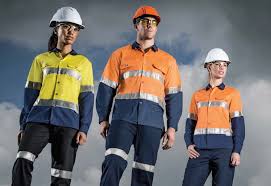Evaluating Safety Ratings for Protective Clothing and Gear Standards
Understanding Safety Ratings on Safety Clothing
In today's fast-paced world, safety clothing plays a crucial role in protecting workers across various industries. Whether it’s in construction, manufacturing, or healthcare, the right protective gear can significantly reduce the risk of injuries. However, understanding the safety ratings associated with these garments is essential for ensuring maximum protection. This article delves into what safety ratings mean, their importance, and how they are determined.
Understanding Safety Ratings on Safety Clothing
One of the key reasons safety ratings matter is that they help employers select the appropriate safety gear for their workers. For example, in construction, workers may be exposed to falling objects and heavy machinery. As such, safety clothing with high ANSI ratings for visibility and impact resistance, such as high-visibility vests and hard hats, is essential. Similarly, in chemical handling, clothing that meets specific chemical resistance ratings is necessary to protect workers from hazardous materials.
safety rating on safety clothing

Safety ratings also provide a benchmark for the manufacturers of safety clothing. By adhering to sets of rigorous testing and evaluation criteria, manufacturers can ensure that their products meet industry standards. This not only helps in building credibility with consumers, but it also encourages innovation within the industry. Companies that invest in research and development can create superior safety clothing that meets or exceeds existing safety standards.
Moreover, safety ratings educate workers about the limitations and specific uses of their protective gear. Each rating corresponds to specific test results and requirements; hence, workers should understand what these ratings mean. For instance, a garment with a high flame resistance rating is not necessarily suitable for high-visibility applications, and vice versa. By educating workers on how to interpret these ratings, employers can ensure that they choose the right gear for the tasks at hand, ultimately enhancing workplace safety.
It is also worth noting that safety ratings can vary from country to country. This international inconsistency means that workers and employers who operate in multiple regions must be particularly vigilant. Familiarizing themselves with local standards and ratings is crucial for compliance and optimal safety. Additionally, labeling on protective clothing should clearly state the relevant ratings, allowing for quick assessments.
In conclusion, safety ratings on safety clothing are vital for ensuring worker protection across various industries. They provide essential information for manufacturers, employers, and employees regarding the level of protection offered by different garments. By understanding and adhering to these ratings, businesses can create safer work environments and significantly reduce the risk of workplace injuries. Therefore, it is imperative for all stakeholders to prioritize safety ratings and invest time in understanding them, as they are more than just numbers—they represent a commitment to safety and health in the workplace.
-
Wholesale Safety Helmets - Cheap OEM Supplier China Manufacturer
NewsMay.30,2025
-
Top Safety Helmet Manufacturers in Japan - Durable & Certified
NewsMay.30,2025
-
Affordable 3M Safety Helmets in Pakistan Bulk Pricing & Factory Deals
NewsMay.30,2025
-
Affordable HDPE & EN397 Hard Hats - Safety Certified, Bulk Deals
NewsMay.29,2025
-
FDA-Compliant Food Safety Clothing Suppliers Health Dept Approved
NewsMay.29,2025
-
adidas safety clothing
NewsMar.07,2025
